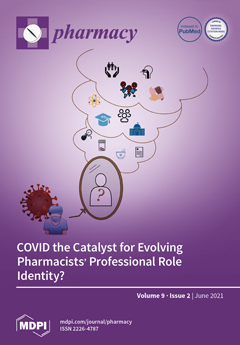This cross-sectional study explored the association between medication non-adherence and its factors in patients with non-communicable diseases (NCDs) using an online structured questionnaire emailed to 30,000 people (aged over 20 years who lived in Japan at the time of the survey). The questions
[...] Read more.
This cross-sectional study explored the association between medication non-adherence and its factors in patients with non-communicable diseases (NCDs) using an online structured questionnaire emailed to 30,000 people (aged over 20 years who lived in Japan at the time of the survey). The questions concerned respondents’ characteristics, medication non-adherence, health beliefs, lifestyles, and trouble taking medication. Factors related to non-adherence were analyzed among patients with lifestyle-related NCDs categorized into two age groups: 20–59, and >60 years. Unintentional (
p < 0.001) and intentional (
p < 0.001) non-adherence were more common among patients aged 20–59 than in older adults. NCD patients aged 20–59 experienced significantly more trouble taking medication than older adults. Multiple regression analysis showed that for patients aged 20–59 with NCDs, unintentional non-adherence was significantly and positively associated with current smoking habits (β = 0.280,
p < 0.001), while intentional non-adherence was significantly and positively associated with alcohol consumption (β = 0.147,
p = 0.020) and current smoking habits (β = 0.172,
p = 0.007). In patients aged 20–59, unhealthy eating habits (β = −0.136,
p = 0.034) and lack of exercise (β = −0.151,
p = 0.020) were negatively associated with intentional non-adherence. In conclusion, factors affecting medication non-adherence in patients with lifestyle-related diseases are related to health awareness, lifestyle, and medication barriers.
Full article





